|
Sunday:
July 21, 2002 | |
0001 GMT |
 |
Making space travel simpler with interplanetary highway
A "freeway" through the solar system resembling a vast array of virtual winding tunnels and conduits around the Sun and planets, discovered by an engineer at NASA's Jet Propulsion Laboratory, can slash the amount of fuel needed for future space missions.
 FULL STORY FULL STORY
 |  |
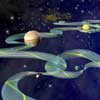
|
 |
High-school student uses NASA probe for science fair
A high-school student teamed up with a professional astronomer to make observations of the remains of a star explosion with NASA's Rossi X-ray Timing Explorer (RXTE) spacecraft. Harish Khandrika, an 11th grade student has won a series of awards from the project.
 FULL STORY FULL STORY
 |  |
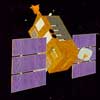
|
 |
|
Saturday:
July 20, 2002 | |
0119 GMT |
 |
NASA studies cloud crystals for climate change research
Scientists from NASA are joining others to investigate high tropical cirrus clouds composed of tiny ice crystals. The researchers hope to determine how the clouds form, how they limit the amount of sunlight reaching the surface of the Earth and how they trap heat rising from the surface and lower atmosphere. This key information will help improve computer programs that forecast global climate change.
 FULL STORY FULL STORY
 |  |

|
 |
Lockheed contracted for next Hubble servicing
Lockheed Martin has received a contract modification valued at $123 million from NASA's Goddard Space Flight Center for work to be performed in support of Servicing Mission 4, the final servicing mission to the Hubble Space Telescope, scheduled for February 2004.
 FULL STORY FULL STORY
 |  |
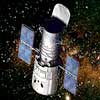
|
 |
|
Friday:
July 19, 2002 | |
0608 GMT |
 |
Fueling, countdown tests ahead for first Delta 4
Super-cold rocket fuel will be pumped into Boeing's inaugural Delta 4 rocket at Cape Canaveral's Complex 37 for the first time next week as the company kicks off a sequence of launch pad tests that will culminate with an engine firing at the end of August.
 FULL STORY FULL STORY
 PHOTO GALLERY OF COMPLEX 37 PHOTO GALLERY OF COMPLEX 37
 |  |
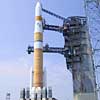
|
 |
NASA mulls space shuttle launch options
NASA managers are converging on a repair plan to fix small cracks in space shuttle fuel lines that could lead to a resumption of shuttle flights by late September or early October. During an all-day meeting Wednesday, shuttle managers reviewed repair plans and a variety of possible launch options. While no final decisions were made, the most favored option calls for delaying the shuttle Columbia's flight on a 16-day science mission until at least early December, after two space station assembly flights.
 FULL STORY FULL STORY
 |  |
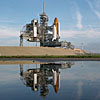
|
 |
Behind the scenes at a stellar chemical factory
An image taken with the Hubble Space Telescope shows one of the most unusually long planetary nebulae found so far. Scientists think planetary nebulae hold the key to understanding how the Universe became enriched with heavier elements so they study them intensively. It is not well-understood how a perfectly round star can turn into such an unusual-looking nebula.
 FULL STORY FULL STORY
 |  |

|
 |
|
Thursday:
July 18, 2002 | |
0406 GMT |
 |
Atlas 5 rocket passes final countdown demonstration
Lockheed Martin's next-generation Atlas 5 rocket cleared its last major launch pad test this week, putting the vehicle on course to begin final preparations for blastoff on the much-anticipated inaugural voyage August 12.
 FULL STORY FULL STORY
 PHOTO GALLERY OF WEDNESDAY'S ROLLBACK PHOTO GALLERY OF WEDNESDAY'S ROLLBACK
 ARCHIVED ATLAS 5 COVERAGE ARCHIVED ATLAS 5 COVERAGE
 |  |
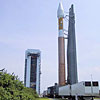
|
 |
First operational flight of Japanese H-2A rocket set
Japan's next H-2A rocket flight now has a scheduled launch date of September 10, the country's space agency announced Wednesday. Two satellites will be lofted into space by the advanced booster, which will be making its third voyage after two successful test launches.
 FULL STORY FULL STORY
 |  |

|
 |
European Space Agency revives mission to Venus
After being shelved just two months ago, plans to send a European robotic probe to Venus have been given a new lease on life, but at least one more obstacle remains.
 FULL STORY FULL STORY
 |  |
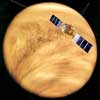
|
 |
|
Wednesday:
July 17, 2002 | |
0434 GMT |
 |
French Spot 5 Earth-imager ready for business
The newest commercial eye-in-the-sky has been declared fully operational after two months of tests and checkouts since its launch in early May. The French space agency gave the go-ahead to Spot Image to begin commercial operations with the new Spot 5 satellite last week.
 FULL STORY FULL STORY
 |  |
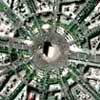
|
 |
Atlas 5 put though launch countdown simulation
Lockheed Martin's first Atlas 5 rocket was rolled back to the launch pad Monday for the third and final countdown dress rehearsal. The launch team fueled the rocket Tuesday to practice procedures that will be used during the real countdown on August 12. Rollback to the assembly building is planned for Wednesday afternoon.
 MISSION STATUS CENTER - updates! MISSION STATUS CENTER - updates!
 ARCHIVED ATLAS 5 COVERAGE ARCHIVED ATLAS 5 COVERAGE
 |  |
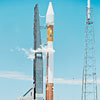
|
 |
Chandra mission operations contract lengthened
NASA has extended its contract with the Smithsonian Astrophysical Observatory in Cambridge, Mass. to August 2003 to provide science and operational support for the Chandra X-ray Observatory, one of the world's most powerful tools to better understand the structure and evolution of the universe.
 FULL STORY FULL STORY
 |  |
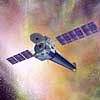
|
 |
|
Tuesday:
July 16, 2002 | |
0300 GMT |
 |
NASA looks for commercial ways to resupply station
NASA's Alternate Access to Station project has awarded four contracts to expand options beyond today's capability for delivering supplies to the International Space Station. Companies will come up with cargo vehicle concepts for rendezvous and docking to the station.
 FULL STORY FULL STORY
 |  |

|
 |
Atlas 5 set for launch countdown simulation
Lockheed Martin's first Atlas 5 rocket was rolled back to the launch pad Monday for the third and final countdown dress rehearsal. The launch team will fully fuel the rocket today to practice procedures that will be used during the real countdown on August 12.
 MISSION STATUS CENTER MISSION STATUS CENTER
 ARCHIVED ATLAS 5 COVERAGE ARCHIVED ATLAS 5 COVERAGE
 |  |
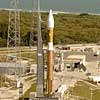
|
 |
New polar weather satellite passes initial testing
Three weeks after being launched into orbit around Earth's poles, the NOAA-17 weather satellite and its onboard instruments have undergone over 100 tests, allowing NASA to deliver the healthy spacecraft to NOAA as planned.
 FULL STORY FULL STORY
 |  |
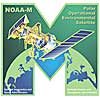
|
 |
American-made satellite boosted to orbit for Japan
The N-STAR c mobile communications satellite has successfully achieved geostationary orbit 22,300 miles above the planet, two weeks after its launch, the joint manufacturing team of Lockheed Martin and Orbital Sciences announced Monday.
 FULL STORY FULL STORY
 |  |

|
 |
|
Monday:
July 15, 2002 | |
0001 GMT |
 |
Satellite data finds four active volcanoes in Andes
Four volcanoes in the central Andes mountains of South America, all previously thought to be dormant, must now be considered active due to ground motions detected from space, geophysicists say.
 FULL STORY FULL STORY
 |  |

|
 |


 This exceptional chronicle of the historic Apollo 11 lunar landing mission features new digital transfers of film and television coverage unmatched by any other.
This exceptional chronicle of the historic Apollo 11 lunar landing mission features new digital transfers of film and television coverage unmatched by any other.
 Apollo 11 - The NASA Mission Reports Vol. 3 is the first comprehensive study of man's first mission to another world is revealed in all of its startling complexity. Includes DVD!
Apollo 11 - The NASA Mission Reports Vol. 3 is the first comprehensive study of man's first mission to another world is revealed in all of its startling complexity. Includes DVD!